Abstract
Induction of circulating interferon and protection against vaccinia virus infection in mice by injection of Brucella abortus were studied. It was demonstrated that morphologically intact brucellae (either live or killed by heat or exposure to NaOH) induce high and prolonged levels of circulating interferon in mice. In each instance, the inducing principle remained associated with the bacterial particle. Disruption of brucellae by mechanical means destroyed the interferon-inducing capacity. However, by alkalinization of the water extract of disrupted bacilli, an interferon inducer could be rescued. On intravenous injection, this inducer caused a typical endotoxin type of interferon response with a peak value at 2 hr. Mice pretreated with cycloheximide showed an enhanced interferon response to the brucella extract, but a reduced reaction to live brucellae. The significance of these data, in relation to the triggering of de novo interferon synthesis by brucella, is discussed. It was also observed that small doses of brucellae protected mice for at least 1 month against vaccinia virus infection. High doses of heat-or alkali-killed brucellae protected the animals for only a short time, and disrupted brucellae did not afford any protection. Thus, there was a good correlation between interferon-inducing capacity and short-term protective activity. Long-term protection, on the other hand, seemed to be related to multiplication of brucellae in the body.
Full text
PDF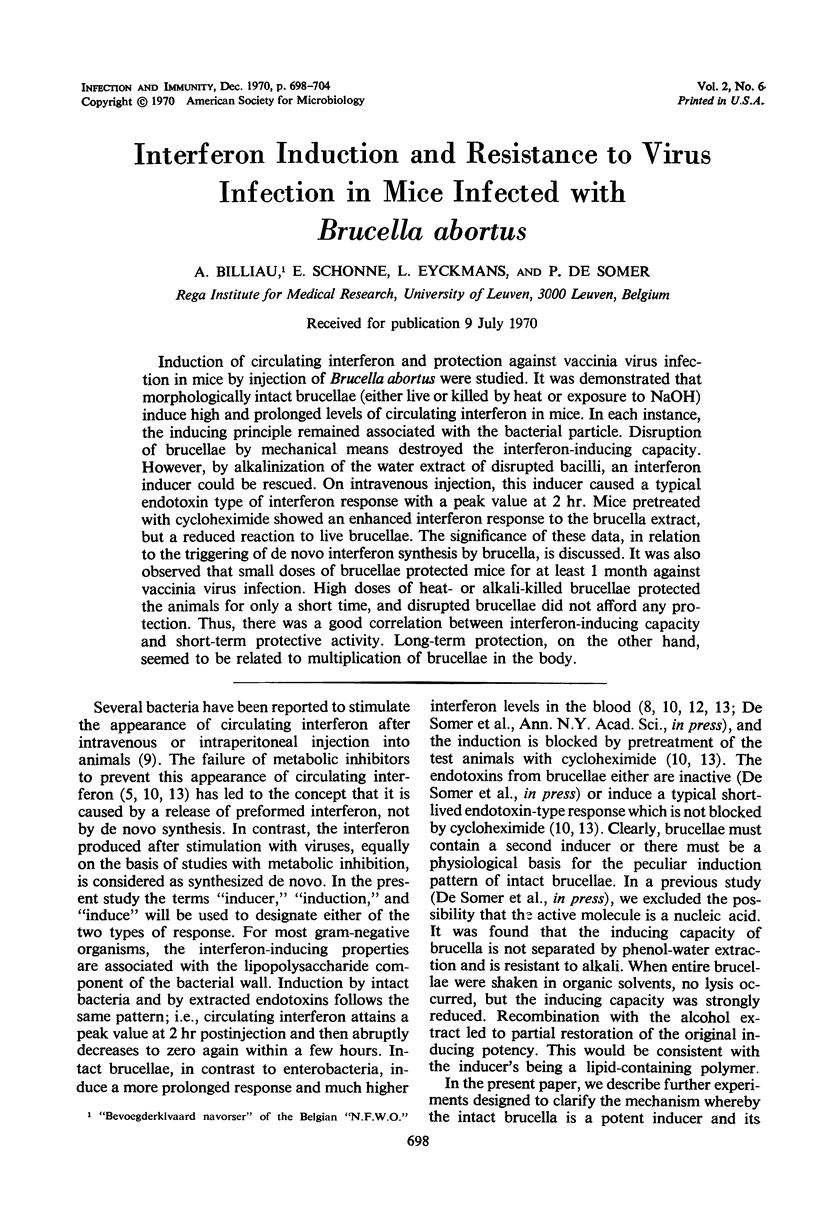
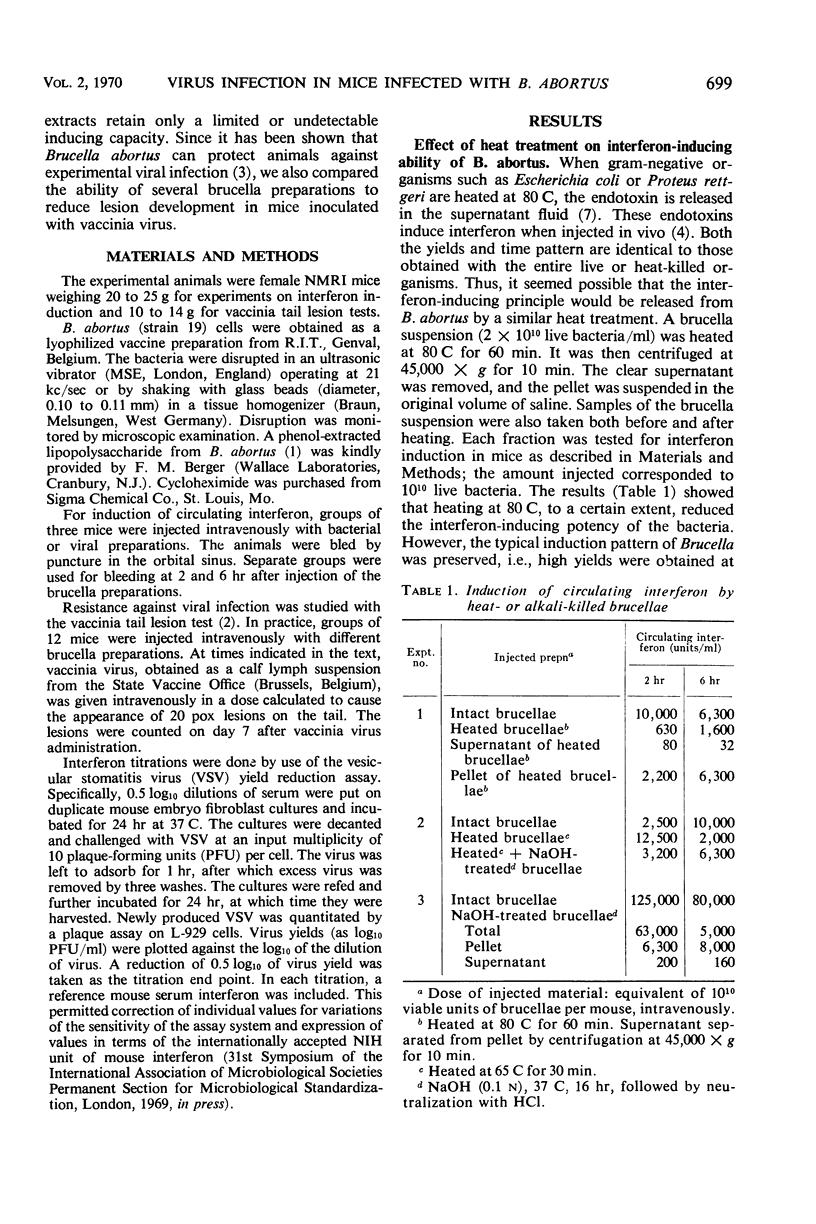
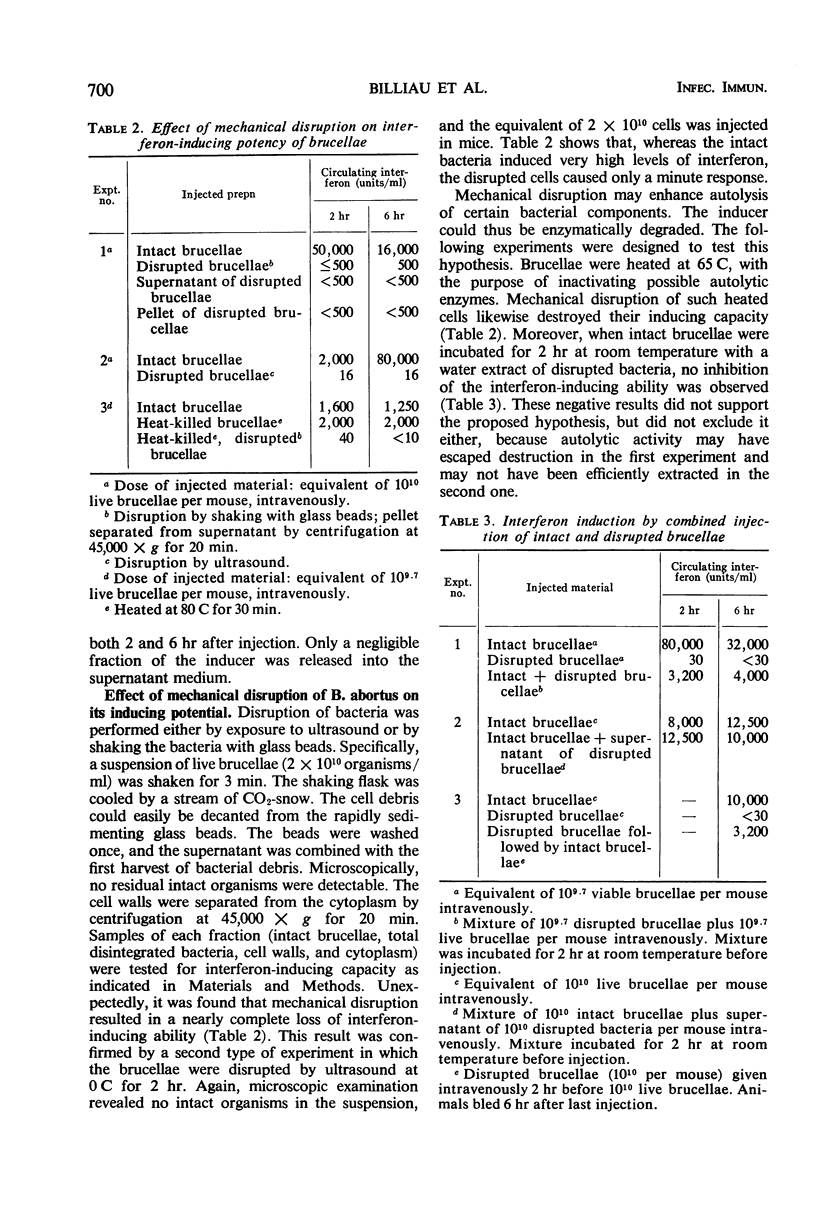
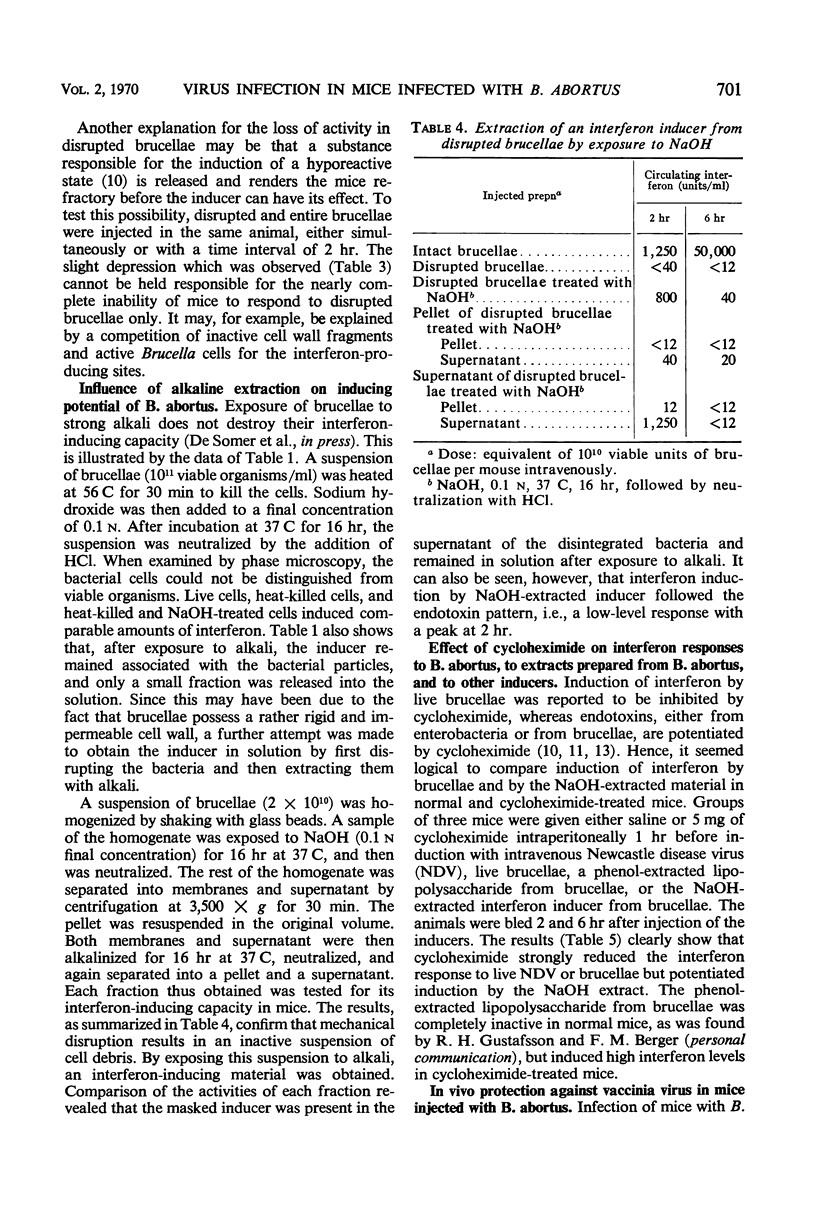

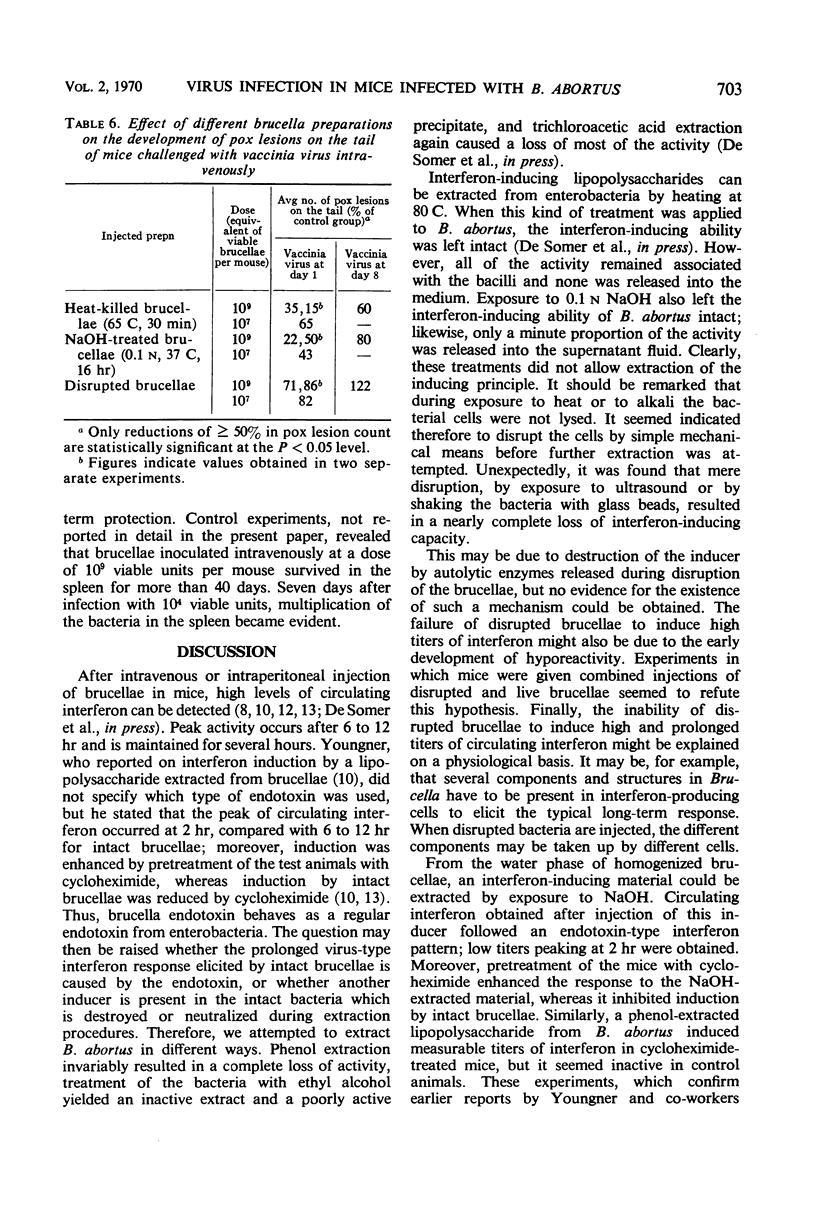
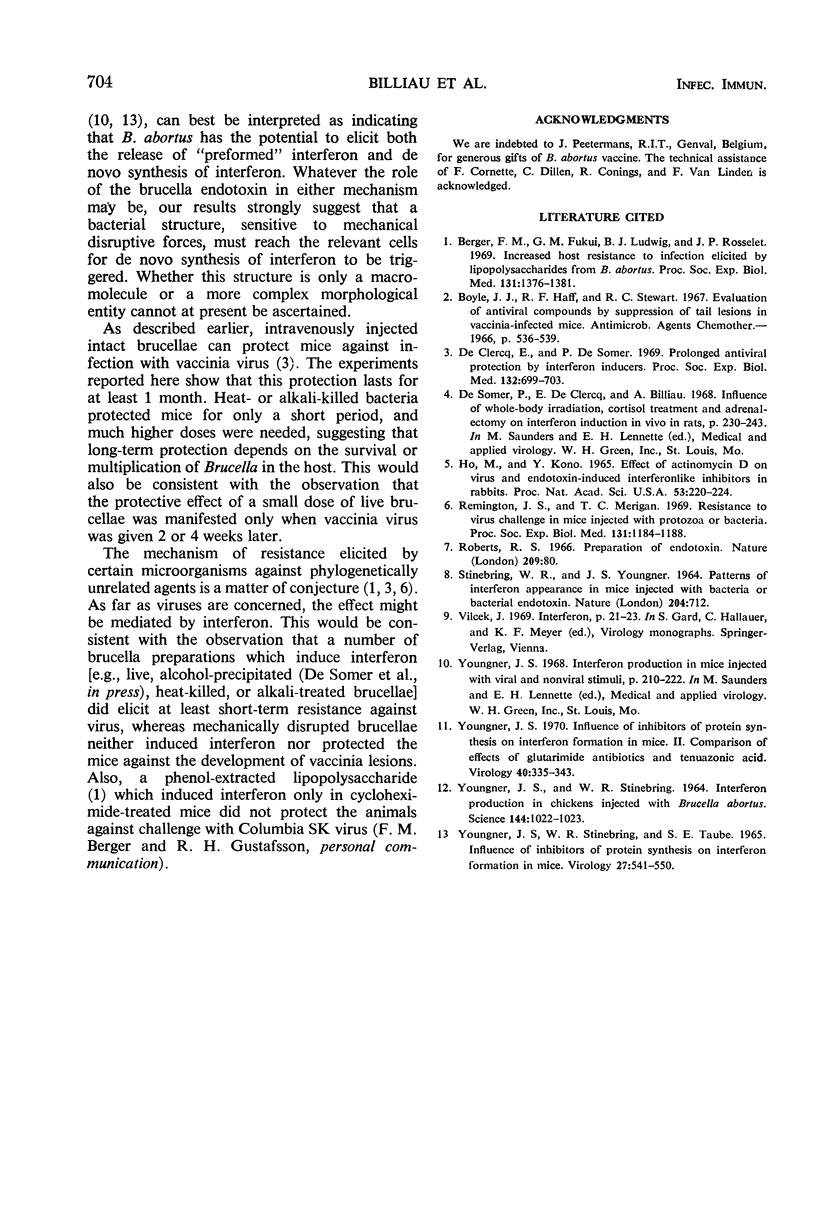
Selected References
These references are in PubMed. This may not be the complete list of references from this article.
- Berger F. M., Fukui G. M., Ludwig B. J., Rosselet J. P. Increased host resistance to infection elicited by lipopolysaccharides from Brucella abortus. Proc Soc Exp Biol Med. 1969 Sep;131(4):1376–1381. doi: 10.3181/00379727-131-34111. [DOI] [PubMed] [Google Scholar]
- Boyle J. J., Haff R. F., Stewart R. C. Evaluation of antiviral compounds by suppression of tail lesions in vaccinia-infected mice. Antimicrob Agents Chemother (Bethesda) 1966;6:536–539. [PubMed] [Google Scholar]
- De Clercq E., De Somer P. Prolonged antiviral protection by interferon inducers. Proc Soc Exp Biol Med. 1969 Nov;132(2):699–703. doi: 10.3181/00379727-132-34291. [DOI] [PubMed] [Google Scholar]
- HO M., KONO Y. EFFECT OF ACTINOMYCIN D ON VIRUS AND ENDOTOXIN-INDUCED INTERFERONLIKE INHIBITORS IN RABBITS. Proc Natl Acad Sci U S A. 1965 Jan;53:220–224. doi: 10.1073/pnas.53.1.220. [DOI] [PMC free article] [PubMed] [Google Scholar]
- Remington J. S., Merigan T. C. Resistance to virus challenge in mice infected with protozoa or bacteria. Proc Soc Exp Biol Med. 1969 Sep;131(4):1184–1188. doi: 10.3181/00379727-131-34066. [DOI] [PubMed] [Google Scholar]
- Roberts R. S. Preparation of endotoxin. Nature. 1966 Jan 1;209(5018):80–80. doi: 10.1038/209080a0. [DOI] [PubMed] [Google Scholar]
- STINEBRING W. R., YOUNGNER J. S. PATTERNS OF INTERFERON APPEARANCE IN MICE INFECTED WITH BACTERIA OR BACTERIAL ENDOTOXIN. Nature. 1964 Nov 14;204:712–712. doi: 10.1038/204712a0. [DOI] [PubMed] [Google Scholar]
- YOUNGNER J. S., STINEBRING W. R. INTERFERON REDUCTION IN CHICKENS INJECTED WITH BRUCELLA ABORTUS. Science. 1964 May 22;144(3621):1022–1023. doi: 10.1126/science.144.3621.1022. [DOI] [PubMed] [Google Scholar]
- Youngner J. S. Influence of inhibitors of protein synthesis on interferon formation in mice. II. Comparison of effects of glutarimide antibiotics and tenuazonic acid. Virology. 1970 Feb;40(2):335–343. doi: 10.1016/0042-6822(70)90410-1. [DOI] [PubMed] [Google Scholar]
- Youngner J. S., Stinebring W. R., Taube S. E. Influence of inhibitors of protein synthesis on interferon formation in mice. Virology. 1965 Dec;27(4):541–550. doi: 10.1016/0042-6822(65)90179-0. [DOI] [PubMed] [Google Scholar]


